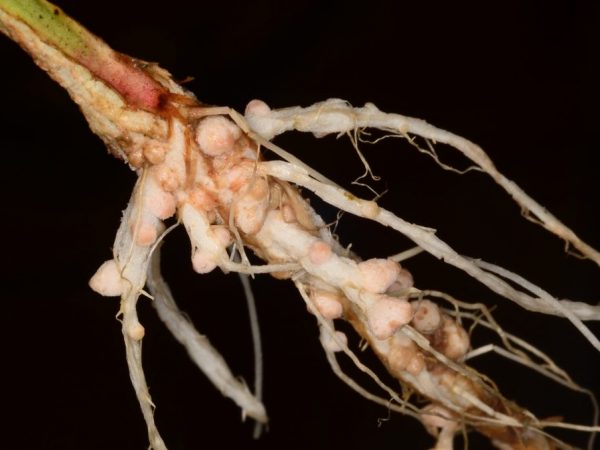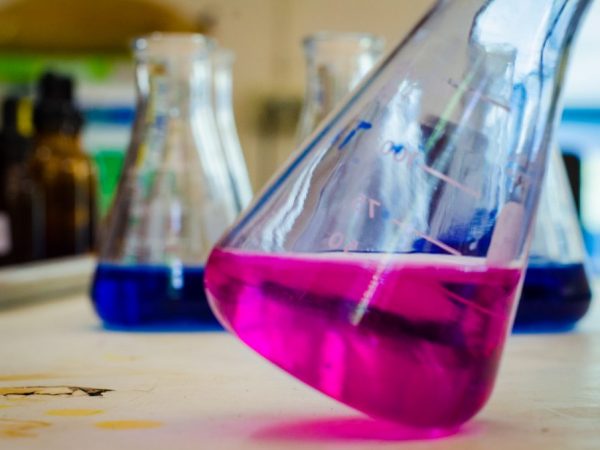Top dressing of garlic with ammonia
Garlic is an unpretentious bulbous plant. However, some problems can still arise when growing this vegetable crop. Timely feeding of garlic with ammonia is one of the simple and effective ways to get healthy and strong plants, which means a good harvest.

Top dressing of garlic with ammonia
Characteristics of ammonia
Ammonia or aqueous ammonia is a generally available and environmentally friendly product (it does not accumulate in feathers or bulbs) and is widely used in medicine and in everyday life. It contains a large amount of easily assimilable nitrogen, which is necessary for the normal growth and development of plants. The strong characteristic smell of ammonia helps in the fight against the main pests of bulbous crops (onion fly, carrot fly, weevil, wireworm, aphid, root nematode).
Precautions
• Ammonia can irritate or burn the skin, so it is best to work with gloves.
• Due to the strong odor, it is advisable to wear a mask or prepare the composition outdoors.
• Hypertensive patients should be careful, because contact with ammonia can cause a sharp increase in pressure and deterioration of health.
• The drug should be stored in a container with a tightly closed lid and kept out of the reach of children.
Processing
Consider how to properly feed garlic with ammonia without harm to the plant and your own body.
Conditions of conducting
• The optimum temperature for feeding should be at least 10 C.
• Spraying should be carried out in dry weather, in the morning or evening. Otherwise, the liquid droplets will act like lenses in the sun, and burns will appear on the pen.
• Watering garlic with ammonia is carried out only if the soil is already wet. Otherwise, you can provoke a chemical burn of the roots. If the weather is dry and hot, you should first water the plants abundantly with plain water.
• It is necessary to prepare the composition immediately before use, since the ammonia quickly evaporates.
Types of feeding

Water or spray with ammonia
Top dressing can be root, that is, watering is carried out at the root, or foliar, that is, spraying is carried out on the leaf. In rainy weather, foliar top dressing should not be carried out, since the working fluid will be washed off. It is advisable that after spraying, the drug is not washed off for at least three hours.
Stages
The first dressing of garlic with ammonia can be carried out already when planting cloves. Watering with ammonia dissolved in water in a ratio of 50 ml per 10 liters will simultaneously provide protection against an active soil pest - wireworm. The average consumption of the prepared solution is 3 buckets per 10 sq. M.
Further, for the purpose of prevention, spraying is regularly carried out on the leaf every 7-10 days with a weak solution in a ratio of 25-30 ml per 10 liters. Laundry soap is used as an auxiliary to keep the mixture on the leaves longer.Such a soap emulsion is prepared from 100 g of soap and 1 liter of hot water and added to the total composition with ammonia. The period of 10 days is due to the fact that the larvae of the pests are hatched from the eggs on average once every 10-14 days. Eggs have a very dense shell, so most drugs do not work on them.
Additional processing
If the tips of the leaves of the garlic turn yellow and there is a weak development of the green mass, then the plant is deficient in nitrogen. In this case, the concentration should be increased to 60 ml per 10 liters. You can water it at the root and carry out foliar processing at the same time. This ensures a more complete and faster absorption of nitrogen. This procedure will accelerate the growth and development of garlic feathers and bulbs. Loosening the row spacing after each watering guarantees good oxygen access to the roots and the evaporation of excess moisture.
Conclusion
Fertilizing garlic with ammonia will provide an excellent harvest and help avoid pests throughout the growing season without the use of pesticides and chemicals. When working with such a substance, it is necessary to strictly observe precautions and follow the rules for processing the plant. Remember that a low concentration of fertilizer will not work, and too high can cause chemical burns.


